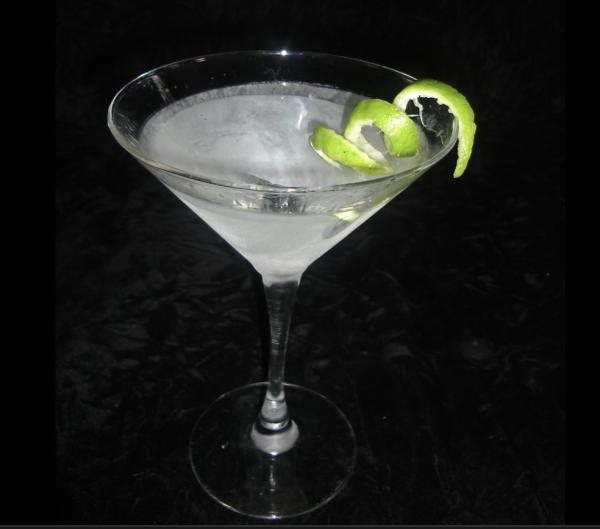I don't need to tell you, especially if you've ever needed pain medications for moderate-severe pain, that this country is just plain nuts. Many people still believe that prescription opioid pills are small, white time bombs that continue to addict and kill a huge and growing swath of the US. The facts, however, tell a different story; very few people who use these drugs while under a physician's care will either die from or become addicted to them – an obvious disconnect between public perception and reality. More on this later.

The Oxycodone Warhead of Doom Image: Wikipedia
Opioid addiction and overdose deaths are in the news virtually every day. But do you know what isn't? Addiction, disease, and deaths from alcohol, in spite of the fact (as you'll see below), alcohol causes a whole lot more damage than both prescription and illicit opioids combined. Something just doesn't add up. Why aren't addiction zealots raiding bars and liquor stores and pushing laws that ban alcohol? Oh, never mind. This was already tried between 1920 and 1933 and was an unmitigated disaster.
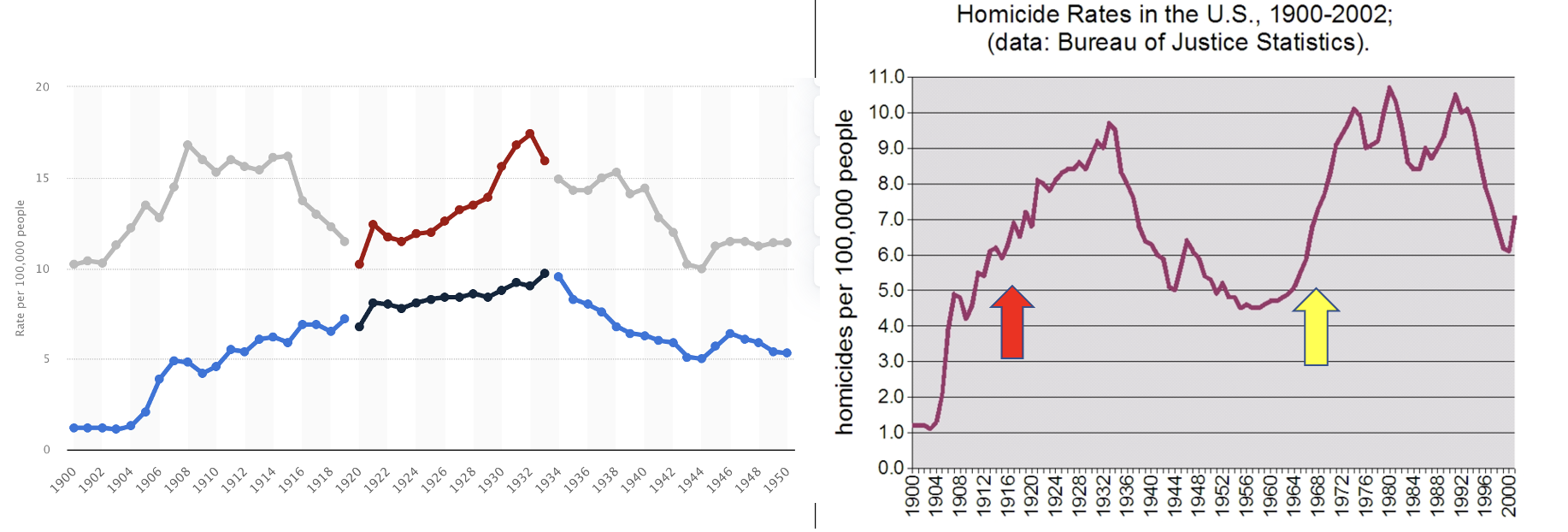
(Left) Increase in homicides (black) and suicides (red) during prohibition. Source: Statista. (Right) A look at the acceleration in the homicide rate at the beginning of Prohibition in 1920 (red arrow) and also when Richard Nixon initiated his War On Drugs in 1971 (yellow arrow). Is anyone picking up on a trend? Free image: Favpng
From a purely public health standpoint, does it make any sense to keep up the attack on pain meds? Opioids are medically essential for many people, while alcohol has no medical utility. Should we keep the focus on opioids while the country drinks itself into a stupor? No, it makes no sense. Let's look at some comparisons between alcohol and opioids. The more you look, the less the obsessive war against painkillers makes sense.
1. Loss of life
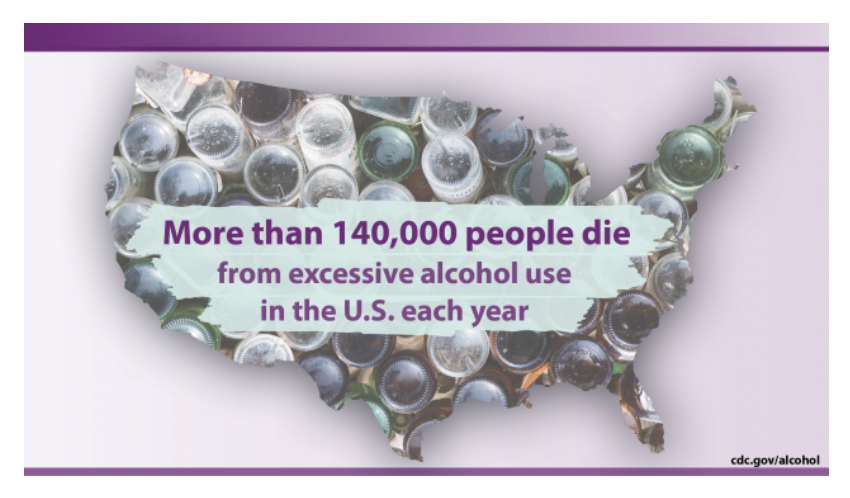
Self-explanatory, Source: CDC
Compare that to this:
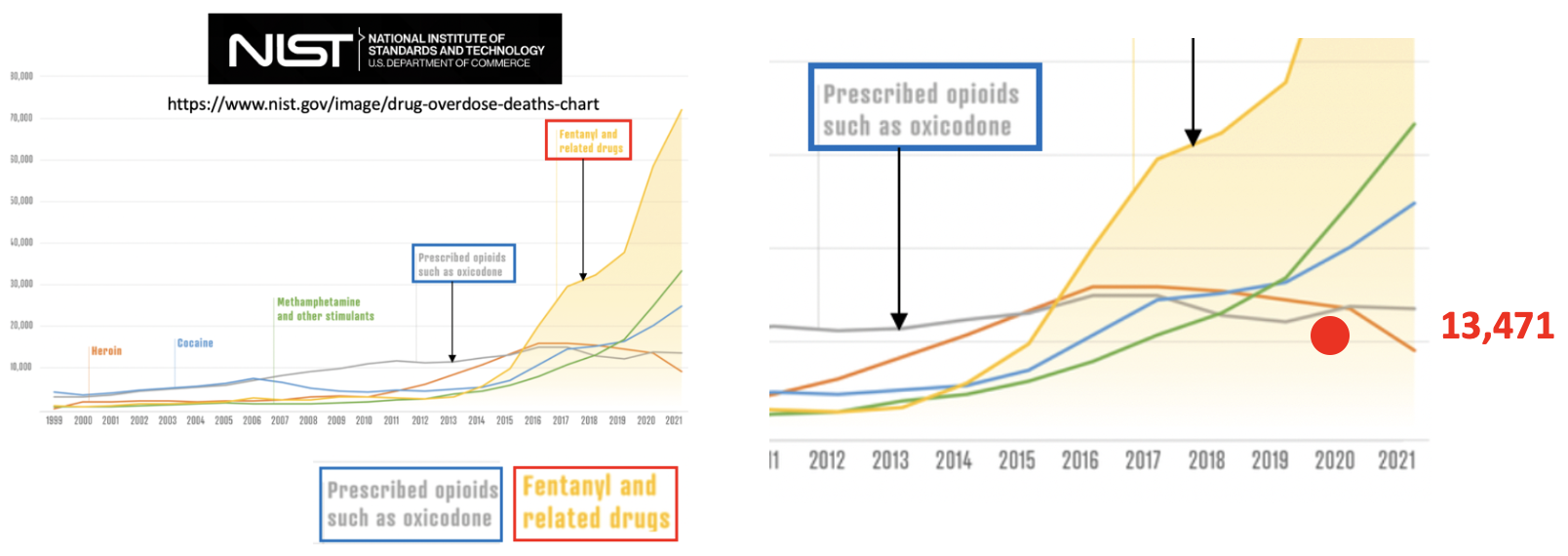
Source: NIST. (Left) Deaths (by year) from five drug classes. (Right) The enlarged section of the graph shows data since 2012.
Prescription opioids caused 13,471 deaths in 2020, not terribly different from previous years, as seen on the graph. Prescription opioid deaths have remained stable during a time when prescriptions were cut by 60 percent. It should also be noted that even this relatively low number is certainly too high since it is the sum of deaths from both medical and non-medical use of prescription opioids. Patients who are prescribed medications for pain use them as intended; in this patient population the additional use of recreational drugs is rare: [My emphasis]
"Less than 5% of people whose opioid therapy is managed in a pain management setting test positive for illicit drug."
Kelli Whitlock Burton in Medscape, October 24, 2022
Conclusion: Opioids, both legal and otherwise, kill only one-tenth as many Americans as alcohol. But when alcohol is compared to opioids used by medically managed patients, that number will necessarily be much lower.
2. Other health issues
Alcohol is a known human carcinogen. There is a solid scientific consensus that alcohol causes a number of cancers, including those of the liver, stomach, breast, and colon. Chemically, this comes as no surprise since the metabolism of alcohol is a two-step process, the first forming acetaldehyde, a known carcinogen.
"In its Report on Carcinogens, the National Toxicology Program of the US Department of Health and Human Services lists consumption of alcoholic beverages as a known human carcinogen."
Source: National Cancer Institute
The carcinogenicity of opioids is less clear. While numerous studies have suggested that the long-term use of opioids is associated with the development of certain cancers, causality has not been established.
Note the difference in wording: [My emphasis]
"Chronic opiate use can have long-lasting effects on health, and there is accumulating evidence about the potential carcinogenicity of opiate use, with associations reported between chronic opiate use and the risk of esophageal, gastric, pancreatic, and bladder cancers." Source: Cancer Epidemiology. Biomarkers & Prevention
Cell-based assays have also suggested an association between opioids and cancer development. Although these assays are helpful in raising red flags, for example, in drug discovery research, they have only a limited utility in predicting real cases of cancer in humans.
3. Substance use disorder
Following the pattern of death statistics, the number of Americans with alcohol abuse disorder (14.8 M) dwarves that of opioid abuse disorder by about six-fold (2.5 M). This means that about 7% of all Americans over the age of 18 have problems with alcohol.
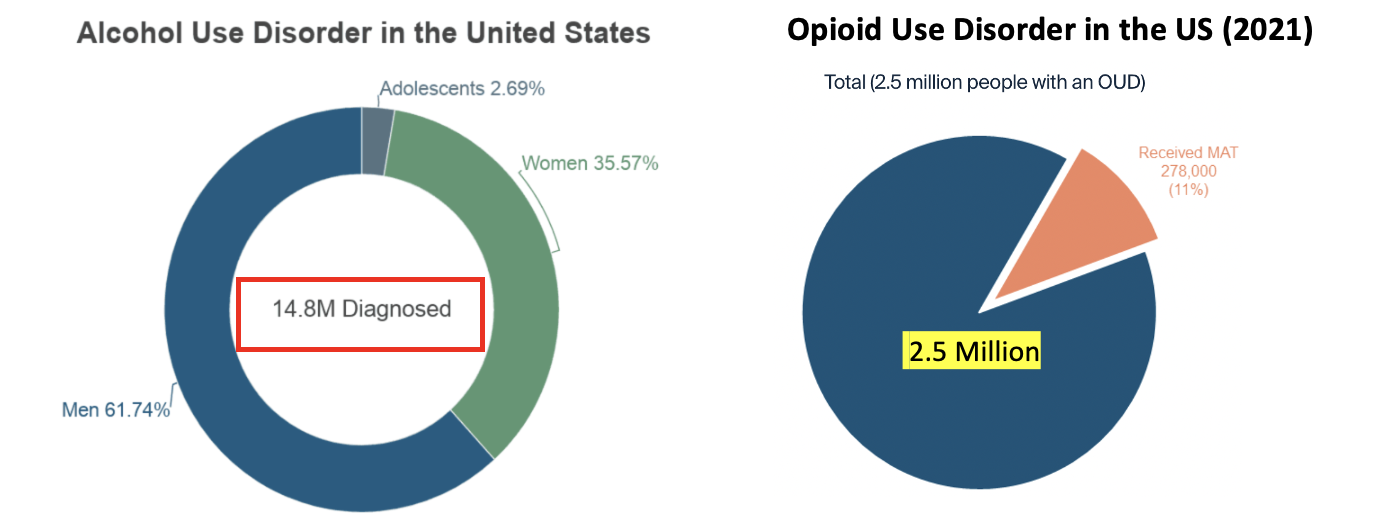
Source: (Left) National Center for Drug Abuse Statistics. (Right) The Commonwealth Fund
Economic Impact
Although misuse of both alcohol and drugs has a profound economic impact on the US economy, alcohol abuse costs us about $100 billion more (annually) than opioid abuse.

Sources: (Left) Pew Trusts. (Right) CDC
Bottom line
Prohibition in the 1920s was a 13-year disaster, but 100 years later we are repeating it, this time with legal, necessary drugs, all in the name of battling addiction. The results are startlingly similar: suffering, poisoning, more deaths, more crime (organized crime vs. drug cartels), and a DEA out of control. The main difference is that this misguided war targets people who did nothing wrong except become sick or injured—what a terrible idea.
No one should interpret anything in this article as a call for the government to step in and once again try an ill-conceived policy to reduce drinking; that has already failed. One hundred years ago the FBI's kicked in doors in attempting to enforce the Volstead Act, which banned alcohol. Now, we have a different type of prohibition – a runaway DEA is kicking in the doors of pain clinics and persecuting doctors who they "believe" are prescribing too much (whatever that means).
Can anyone recommend a good history book? It is badly needed.
